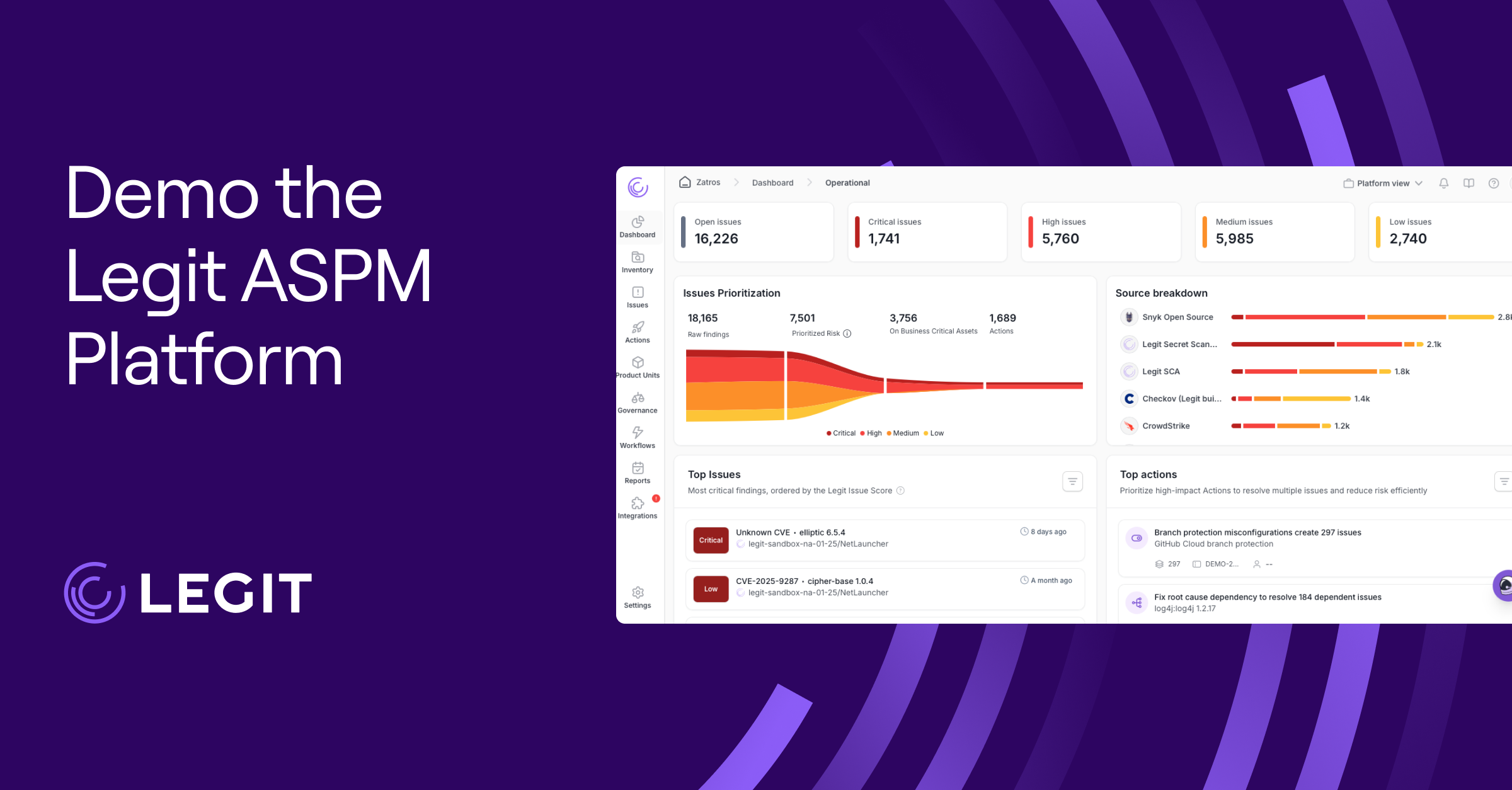DevOps is becoming a mainstay in modern tech processes. But without clear systems and processes behind it, organizations risk losing control.
DevOps governance aligns rapid innovation with your organization's goals, security standards, and compliance requirements in software development. It provides clear guidelines that enable teams to deliver software quickly without sacrificing oversight or quality.
Rather than creating roadblocks, effective governance integrates smoothly into DevOps workflows, improving collaboration and reducing security risks. Scale confidently and maintain control even as your development processes accelerate.
What Is DevOps Governance?
DevOps governance is a structured framework designed to embed security, compliance, and accountability directly within your software development lifecycle (SDLC). Unlike traditional governance methods, which typically add checks after development, this framework integrates governance controls early on. It empowers development teams to operate autonomously while consistently meeting organizational standards and risk management.
Key objectives of a strong DevOps governance framework include clearly defined roles, timelines, and responsibilities. This clarity improves collaboration among stakeholders—like developers, operations teams, and security experts—and reduces friction from bureaucratic oversight.
The Importance of DevOps Governance
Rapid DevOps cycles can expose your codebase to risks like unchecked changes, access misconfigurations, and compliance gaps unless transparent governance exists. Here’s why strong governance matters and the tangible benefits it brings to your development pipeline:
1. Enhances Risk Awareness
Implementing an effective DevOps governance model embeds risk management directly into daily workflows, helping your team spot risks early. Clear guidelines educate people on potential threats and how to respond. They turn risk mitigation from a hurdle into a natural part of your dev process.
2. Improves Compliance
A structured approach simplifies compliance by integrating automated governance into critical development processes. Automating governance consistently applies regulatory standards, reduces human error, and streamlines audits, taking the weight off security teams. Organizations can further strengthen their compliance efforts by integrating security into DevOps workflows.
3. Reduces Security Vulnerabilities
Without robust governance, your organization risks unauthorized changes and potential breaches. Automated governance tools for access control, such as least privilege permissions and vulnerability management, let your teams proactively address and minimize security threats. That includes adopting practices like automating security testing with DevSecOps tools to consistently catch risks early.
4. Streamlines Code Management
Continuous integration and rapid deployments increase the chance of errors or unintended changes slipping through. DevOps governance combats this issue by providing guardrails around the code management processes. By implementing standardized checks, tagging, and validating changes—especially at the commit level through automated procedures—teams can maintain quality and avoid costly mistakes before deploy time.
5. Increases Operational Efficiency
Clear guidelines established by your governance model remove confusion and streamline team collaboration. Standardized processes and communication channels foster efficiency, leading to quicker and more reliable software delivery.
The Different Types of DevOps Governance
The best governance model depends on your organization’s structure. Smaller teams may benefit from centralized control, while larger ones might need more flexible, federated approaches.
Whether you need strict control, more team autonomy, or something in between, there’s a governance structure to support it:
1. Centralized DevOps Governance
In a centralized model, a single authority defines and enforces DevOps policies. Teams follow a standard set of procedures and release timelines, reducing confusion and strengthening security controls. This ensures consistency and compliance, especially in highly regulated industries like financial services, healthcare, and government.
2. Federated DevOps Governance
A federated model provides guardrails from a central authority, typically an enterprise security or platform engineering team, but allows business units to customize practices according to their needs. This promotes ownership and flexibility, making it a good fit for larger organizations where teams vary in tools, workflows, or regulatory exposure.
While the federated model boosts agility and innovation, it also requires coordination to prevent inconsistencies or gaps in security coverage. It pairs well with DevOps security, especially in enterprises where teams vary in structure, tooling, or regulatory requirements.
3. Hybrid DevOps Governance
Hybrid governance combines centralized standards with decentralized execution. You standardize core practices like identity management, secure deployment, and compliance monitoring, while letting teams adjust the rest to fit their workflows. This balances consistency with agility to support collaboration across diverse environments. It’s beneficial for enterprises undergoing digital transformation or managing varied system architectures.
4. Automation in Governance
Many organizations are adopting automation to reduce manual overhead and enhance DevOps governance. Rather than standing alone as a governance model, automation strengthens centralized, federated, and hybrid approaches alike.
Automation includes practices like policy-as-code, version-controlled pipelines, and automated checks to enforce standards in real time. It aligns well with CI/CD security best practices, supporting fast, secure software delivery without introducing risk. It works best when layered into existing models as an enhancement, not a replacement.
DevOps Governance Best Practices
DevOps governance succeeds when it fits directly into how teams build, test, and ship software instead of being confined to static policy documents. Below are several best practices that help organizations enforce consistency and speed across the SDLC:
- Define clear, actionable policies: Set expectations around change management, code access, compliance, and incident response. Clear documentation gives teams shared expectations to work from, avoiding confusion during incidents or handoffs.
- Balance control with team autonomy: The most effective governance models give teams flexibility within a structured framework. This approach builds ownership while keeping critical controls intact.
- Automate governance tasks: Governance shouldn’t slow your pipelines. Use automation for policy checks, access approvals, compliance audits, and security scans. Tools like your build server can automatically validate changes before they move downstream, reducing the need for manual enforcement.
- Use metrics to track effectiveness: Define KPIs tied to governance goals, such as policy violations, rollback frequency, or time to remediate non-compliant code. Measuring what matters keeps your governance strategy grounded in results.
- Iterate often: Governance isn’t static. Review and refine your policies regularly to reflect new technologies, regulations, and team workflows. This agile approach keeps your governance practices relevant and practical over time.
- Train teams on governance fundamentals: Give developers and engineers the context to follow governance rules. Adopting is smoother when teams understand the “why” behind policies and mistakes drop.
- Modernize your approach to application security: Governance should support, not stifle, development. Achieve this by rethinking application security for DevSecOps and scale, shifting security left without adding unnecessary friction.
Implementing DevOps Governance
Implementing DevOps governance means gaining the visibility and control needed to scale responsibly.
The first step is to shift your mindset. Governance is about purposefully managing risk. Begin by auditing your existing DevOps practices to identify gaps in process, tooling, or accountability. Then, map out the business outcomes you want governance to support, whether consistent releases, tighter security, or faster response to change. This clarity shapes a governance model that aligns with your organization’s priorities.
Define clear roles and responsibilities across teams, automate repeatable controls like build validations and access approvals, and “shift left” by integrating quality and compliance checks early in the development lifecycle. As automation becomes more central to governance, many enterprises document their controls and workflows in a DevOps automated governance reference architecture—a blueprint that defines how tools, policies, and responsibilities intersect across delivery pipelines.
Focus on releasing in small batches and tracking performance over time to catch issues early. Don’t overcomplicate things. Governance should grow alongside your DevOps maturity, not smother it. And as your implementation evolves, revisit your model regularly to refine what’s working and phase out what’s not.
DevOps Governance With Legit Security
DevOps governance gives your organization the structure to move fast without losing control. Whether managing risk, improving compliance, or scaling secure delivery practices, a strong governance model aligns your teams and tools with business goals.
Legit Security helps you put that into practice. By integrating seamlessly into your existing DevOps pipeline, Legit enables automated governance that enforces policies, monitors for violations, and protects your SDLC from code to cloud. Reduce manual oversight and give developers the freedom to build—knowing the proper guardrails are always in place. Request a demo today.
Download our new whitepaper.


